What Gauge Wire for a Light Fixture? (Stay Safe)
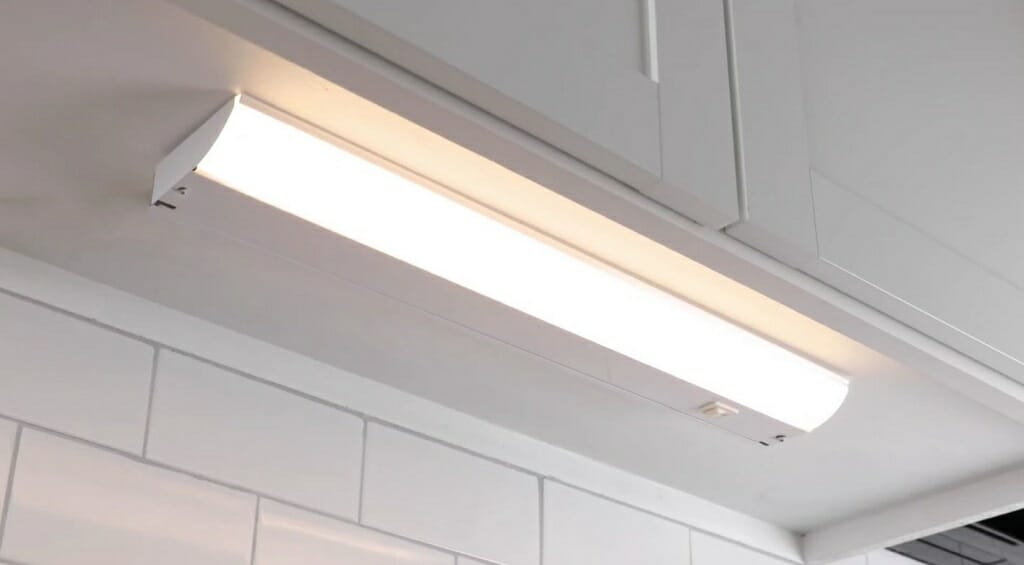
As an electrician, one of my most common calls is related to improperly installed light fixtures connected using the wrong wire gauge. Proper electrical wiring with a focus on using the right gauges is extremely important, and bad installs can lead to fires. Therefore, installing high-quality wires that have the correct gauge is a must.
When it comes to light fixtures, you have to be careful. Usually, you might have 5 or 6 light fixtures or more in your home or workplace. Wrong wire gauges can cause issues such as electrical wire meltdown or a sudden electrical fire. To avoid all of this, today I’m focusing on what gauge wire to use for your light fixtures.
In general, the light fixture wire gauge depends on the ampacity and the distance. For a 120V, 15 amp light fixture, 14 gauge copper wire is more than enough. However, if the distance is more than 45 feet, you’ll need a 12 gauge wire. For 120V, 20 amp fixture, you’ll need a 12 AWG wire.
Well go into more detail below and cover how to make some calculations for your specific case.
Wire Size and Wire Ampacity
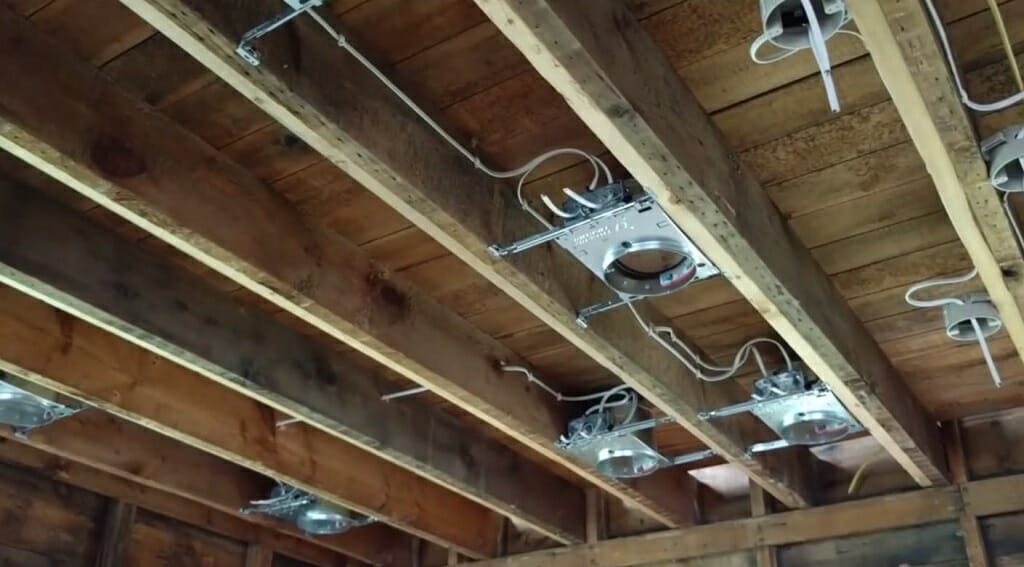
Is there a connection between wire size and wire ampacity?
Yes, indeed there is. Wire size largely depends on the ampacity. Ampacity is the recommended level of current that a wire can run without heating, melting, or catching fire. This ampacity level varies with the wire size.
Ampacity = Wattage/ Rated Voltage
If you are unfamiliar with different types of wire gauges, the below explanation might help you.
American Wire Gauge (AWG)
American wire gauge, aka AWG, is the standard method that represents the wire sizes in North America. You might encounter different wires such as 12 AWG, 14 AWG, 16 AWG, etc.
With higher numbers, the wire diameter gets decreased. For instance, 12 AWG wire is thicker than the 14 AWG wire.
Because of that, the 12 AWG wire is capable of carrying more current than the 14 AWG wire. So, the ampacity is higher in 12 AWG.
- R = ρl/A
- R – Resistance
- ρ – Resistivity
- l – Length of the wire
- A – Cross-sectional area
ρ is a constant. If we consider 12 AWG and 14 AWG wires that have the same length;
R α 1/A
This means with higher diameter wires, the resistance level decreases. (1)
According to Ohm’s Law:
- V = IR
- V – Voltage
- I – Current
- R – Resistance
If we consider V as 120V for both circuits:
1/R α I
So, if the resistance level is low, that particular wire can carry a higher current.
Therefore, the 12 AWG wire is capable of carrying more current than the 14 AWG wire.
More Factors That Influence Wire Size
You now know one factor that directly affects the wire size: ampacity. So, the wire you use for the 15 amp circuit won’t be a good fit for a 20 amp. However, there is another factor; the length of the wire.
If the length of the wire exceeds 50 feet for a lighting fixture, the voltage drop exceeds the recommended level. The above difference in the current occurs due to voltage drop.
Voltage Drop for Lighting
The recommended voltage drop for lighting is 3%. Don’t let the voltage drop exceed that limit.
Lighting Fixture Wiring Circuits
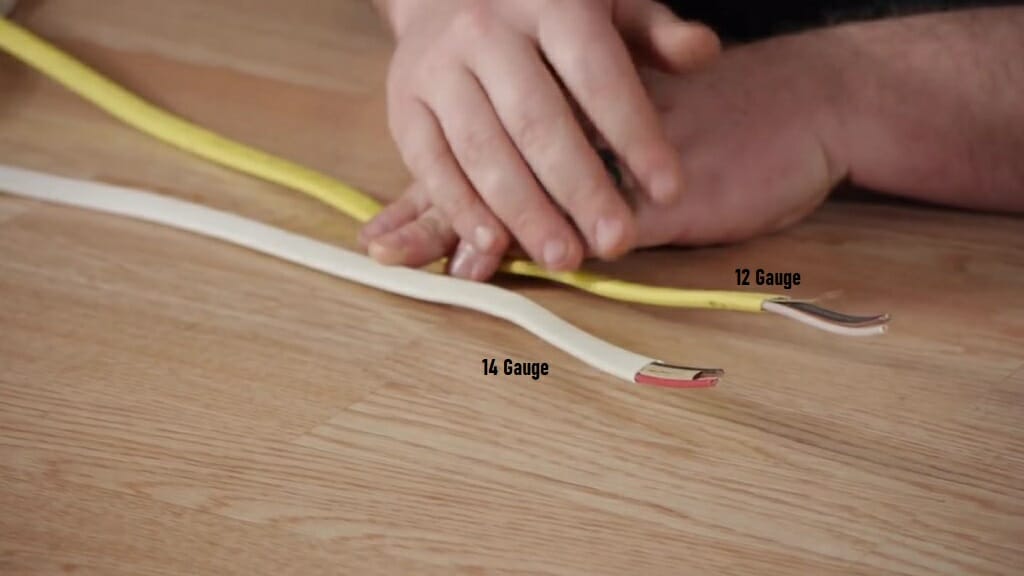
Before deciding on the gauge of the wire for lighting fixtures, remember below key points.
- When the ampacity changes, you might have to change the gauge of the wire.
- When the distance exceeds 50 feet, you’ll need a thicker wire.
Follow this example.
For the 120V circuit, you plan to run eight light fixtures. Each bulb has a wattage of 100W.
Therefore:
Total wattage = 100W × 8 = 800W
Ampacity = 800/120 = 6.66 amp
Use the recognized electrical charts such as Ugly’s Electrical Reference or Audel Mechanical Trades Pocket Manual to find the correct ampacity rating for the above results quotient. It should be 15 amps. (2)
So, for a 15 amp current, you’ll need a 14 AWG copper wire. If the current is 20 amp, you’ll need a 12 AWG wire.
However, if you plan to run the above eight light fixtures in 120V, 15 amp, and over 45 feet circuit, the 14 AWG won’t be enough; change it to 12 AWG. Below voltage drop results will explain why the 14 AWG is not suitable.
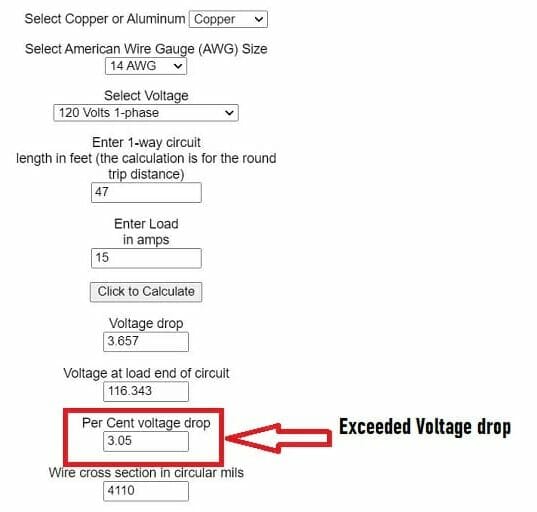
As you can understand, the voltage drop exceeds the recommended 3% for lighting. If the distance is over 45 feet, 12 AWG wire is the most suitable option.
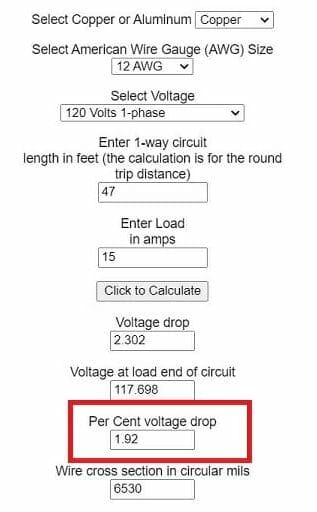
So, always remember to check the wire size with the distance.
Follow this link for the Voltage Drop Calculator.
Take a look at some of our related articles below.
References
(1) resistance level – https://www.investopedia.com/terms/r/resistance.asp
(2) results quotient – https://wonders.physics.wisc.edu/what-is-motion/
Video References
Jasco Products Company
Benjamin Sahlstrom
ehowathomechannel
